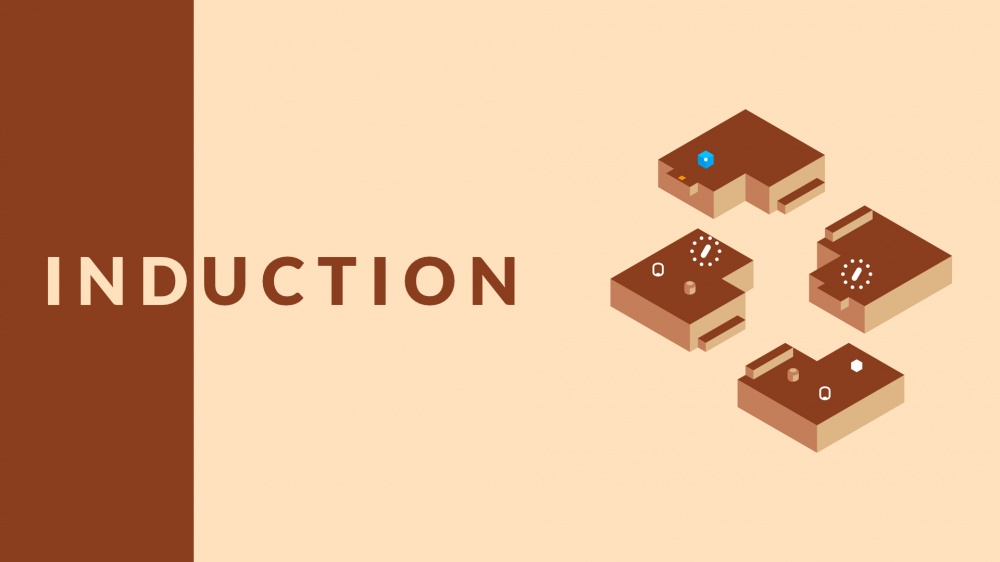Induction is a deceptively simple puzzle game for the Nintendo Switch. It involves a cube, time travel, and push-pull mechanics in a tricky little brain teaser that will hook you from the start.
The trailer for Induction confused me more than anything, but the game itself does a great job of easing you into what will eventually become a real head-scratcher. I love the opening, which doesn’t feature the usual title screen or menu. Instead, we land right in the midst of our first puzzle, with just one on-screen instruction on how to move.
This first level is super easy, dedicated to showing you the ropes in terms of layout and movement. You control a cute little cube – no name, no story, just a cube trying to make its way to the goal of each level. To get there, you’ll have to climb steps, traverse gaps, and push blocks into matching shapes to trigger bridges. It seems easy until you realise that it’s actually impossible. Well, it’s impossible to complete on your own. And this is where it gets really interesting.

The only way to reach your goal is with the help of another cube – yourself, in fact. There’s a neat time-travel element at play in Induction. You move about the level with your original cube, planning your route. Then, hitting the A button conjures your clone from the past. This new guy then proceeds to mimic the path you’ve just taken, making all the same moves. It’s a truly clever setup that lets you push blocks that you actually want your doppelganger to push. Meanwhile, you position yourself in the right spot to head to the goal once the clone has done its job. Simple? Yes. Brilliant? Yup! Difficult? You betcha!
Yes, the puzzles naturally increase in difficulty as you progress, which could put casual players off. As I mentioned, the trailer seemed super confusing to me. Even within the game itself, it took me a few goes to grasp what was happening when I hit that A button. What’s with this new, random cube? Why is it following me? And how do I use it? Eventually, it clicked into place, like awakening from the Matrix, and I spent half an hour glued to the screen as I went through the next 12 or so stages. So, be warned: there are some real head scratchers among the 50 levels, which are mostly linear; you won’t be able to progress without completing the current puzzle.
The graphics match the simple premise, with pastel colors that provide a soft and warm atmosphere. Despite the brain-teasing nature of the game, the minimalist aesthetics help to put you at ease, allowing your brain to work more effectively on the task at hand. The audio supports this, with some great tunes that sink into the background without distracting you from your goal.

The only real downside to Induction is the lack of replayability. Once you’ve completed each level, there’s little reason to return. There are no time limits or star ratings – a good thing if you’re after a game that purely focuses on solving the puzzle. However, it does decrease the need to come back for more.
Overall, Induction is a simple yet clever puzzle title with a unique concept. Don’t let the relaxing music and pastel tones fool you; this is one tough game! Replayability is minimal, but there are some real brain teasers in here for those ready to accept the challenge.
Review: Induction (Nintendo Switch)
Good
Induction is a simple yet clever puzzle title with a unique concept. Don’t let the relaxing music and pastel tones fool you; this is one tough game! Replayability is minimal, but there are some real brain teasers in here for those ready to accept the challenge.



August 5, 2021
[…] post Review: Induction (Nintendo Switch) appeared first on Pure […]
August 6, 2021
[…] Source link : Purenintendo […]
September 1, 2021
[…] Induction […]